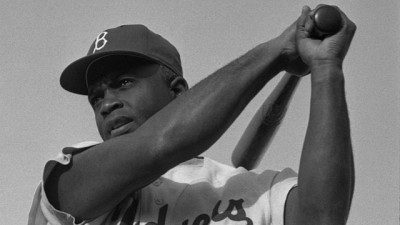Henry Louis Gates, Jr.'s
100 Amazing Facts About the Negro
What Was the Civil Rights Movement?
A silly question, right? I thought so, too, until I learned that in the year 2010, only 2 percent of 12th graders received full credit in identifying the following quote on the National Assessment of Educational Progress U.S. History Exam: ” … Separate education facilities are inherently unequal.” The 12,000 students tested didn’t need to come up with the name Brown v. Board of Education, mind you — just know it had something to do with 1.) segregation 2.) in the nation’s schools — yet a stunning 73 percent either skipped it or received an “inappropriate” score. Continue reading
‘Plessy v. Ferguson’: Who Was Plessy?
‘How many mysteries have begun with the line, “A man gets on a train … “? In our man’s case, it happens to be true, and there is nothing mysterious about his plan. His name is Homer Plessy, a 30-year-old shoemaker in New Orleans, and on the afternoon of Tuesday, June 7, 1892, he executes it perfectly by walking up to the Press Street Depot, purchasing a first-class ticket on the 4:15 East Louisiana local and taking his seat on board. Nothing about Plessy stands out in the “whites only” car. Had he answered negatively, nothing might have. Continue reading
Should Blacks Collect Racist Memorabilia?
I have a confession to make: I collect racist memorabilia. Perhaps it is because my mother seems to have as well. She kept a very small ashtray on a table in our living room featuring a Black Sambo figurine at its center. Since neither of our parents ever smoked, I know Mom didn’t buy this object for its function; she bought it because she was intrigued, just as I was, even as a child. Why was this boy so very black — jet black, the blackest of blacks — and why was he depicted as naked? Again and again in idle moments, I would be drawn to the plight of this little black boy, frozen for all time in a racist form of in extremis, I guess one might say, with the reddest and thickest of lips, the whitest of eyes and the unutterably blackest of skin. Continue reading
What Was Black America’s Double War?
The Double V Campaign during World War II urged black people to give their all for the war effort, while at the same time calling on the government to do all it could to make the rhetoric of the Declaration of Independence and the equal rights amendments to the Constitution real for every citizen, regardless of race. Continue reading
Was Jackie Robinson Court-Martialed?
Robinson’s struggle for equality began in the Army, before he integrated baseball in 1947. Lt. Jack Roosevelt Robinson was actually court-martialed in 1944! Court-martials are military courts, usually consisting of a panel of commissioned officers who conduct a criminal trial. There are three types of courts-martial: Summary Court-Martial, Special Court-Martial and General Court-Martial. Robinson faced a General Court-Martial. Continue reading
Find educational resources related to this program - and access to thousands of curriculum-targeted digital resources for the classroom at PBS LearningMedia.
Visit PBS Learning Media











